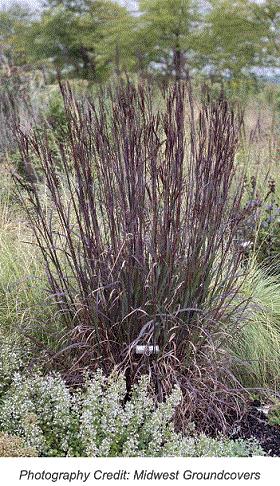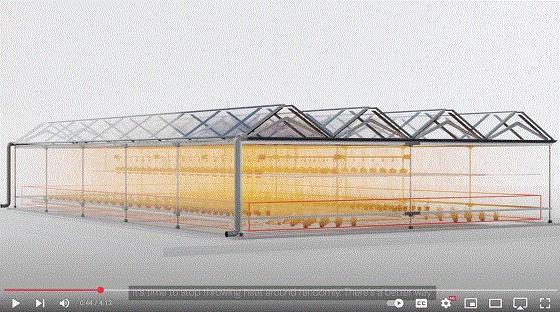PPA's National Symposium is More Than a Trade Show
Although I wasn’t able to attend the Perennial Plant Association’s (PPA) National Symposium last week, it doesn’t mean I didn’t have an inside guy (or gal in this case) there collecting intel I could pass along. Jen Zurko, editor of GrowerTalks, attended her first-ever symposium. Here’s a synopsis of her experience and first impression of the event:
If you asked me to describe the Perennial Plant Association (PPA) Symposium in a couple of words, I would say camaraderie, networking, education and a ton of perennial plants.
This was my first time ever attending the PPA Symposium, so I was eager to see what our perennial expert Paul Pilon has been able to experience for years and it was all of the things I described. The symposium is held in a different location every year (this year it was in Des Moines, Iowa) and I like how it’s organized, giving attendees lots of choices—on which days to attend, which tours to sign up for and different educational tracks.
I say “days to attend” because this isn’t an event where you can show up for one day—you need a couple of days to really get the whole experience and have the time to spend with growers, landscapers, academics and suppliers.
The Perennial Plant Association is a trade association composed of growers, retailers, landscape designers and contractors, educators, and others that are professionally involved in the herbaceous perennial industry. (Photo courtesy of PPA.)
And that’s how Emily Bibens Chung, PPA’s executive director, described the event when we sat down for a brief chat.
“This isn’t a selling show; in the perennials sector, it’s really about the relationships and building connections,” she explained. “We say it’s like a family reunion. You have to come for two or three days to really see what PPA is all about.”

Snapshots from One of Several PPA Tours
The PPA Symposium consisted of numerous tours, each of them showcasing many of the industries top companies near Des Moines. Here’s how Jen summed up the tour she attended.
I purposely chose the Pollen to Plug Tour because it more closely matched what I knew our readers would want to know about. It was a packed day with six stops, including the North Central Regional Plant Introduction Station where they preserve over 60,000 different plant genetics, from corn to cornflowers; Country Landscape Company, which is a landscape supplier that also has a garden center open to the public; and a private native perennials garden at Ana and Ed McCracken’s house designed by Iowa horticulturist Kelly Norris, where I learned about the rattlesnake master plant.
Two of the stops I did want to tell you a bit more about … Did you know that Iowa State University has one of the largest seed labs in the world? I learned that they do a slew of different things here revolving around seed, including testing for pathogens, looking for noxious and invasive weeds among “good seed,” conducting DNA testing, conditioning seed and testing germination rates. They do this on a wide range of seed, from row crops to ornamentals.
Iowa State University’s Seed Lab looks for noxious and invasive weed seed through piles of “good seed” by hand. Literally like a needle in a haystack.
The other was Swift Greenhouses, a multi-generation greenhouse operation in Gilman, Iowa, that produces perennials. I’ll tell you more about Swift Greenhouses in just a second.
The final stop was at Reiman Gardens on Iowa State University’s campus across from Jack Trice Stadium, where attendees from all of the different tours converged to have great food together in a great atmosphere that included a butterfly conservatory. I also learned that Iowa State University is the birthplace of one of my favorite cheat foods, Rice Krispie Treats. I will think about that every time I eat one. Which should be less often than not.

Swift Greenhouses
As just mentioned, Swift Greenhouses is a multi-generation greenhouse operation in Gilman, Iowa, that produces perennials. Third-generation owner Scott Swift said that about 60% of their business is growing perennial plugs for small- and medium-sized growers.
Scott Swift (middle, foreground) taking attendees of the PPA Symposium on a tour of his perennial production operation.
Scott’s grandfather Earl bought the business in 1952 to produce vegetables for the local community (as many of these older family businesses have started) and it slowly evolved into a bedding plant operation as Scott’s father and mother, Larry and Carol, grew the business. When Grandpa Earl bought it, the operation was 15,000 sq. ft. where everything was grown in homemade wooden trays and sold by the dozen; now it’s 6.2 acres of strictly perennial production grown in 50-cell trays filled via a flat-filling machine with their own custom peat-based growing media.
Swift Greenhouses does produce a smattering of houseplants and tea roses, as well as herb plugs, which Scott said are “economically priced.” The other 40% of the Swift growing pie is finished perennial plants for IGCs and hardware stores located within about a 250-mile radius of Central Iowa. All in all, Swift grows 1,000 varieties of perennials, from seed to liner to tissue culture. Scott said that his father really started producing perennials in 1970 and since then the Swifts have become a reliable supplier of a wide range of perennial plants in the Midwest.

Perennial Plant of the Year: Andropogon Blackhawks
 |
Each year I eagerly await for the PPA's Perennial Plant of the Year announcement at it’s annual symposium. The symposium is in the rearview mirror, but the Perennial Plant of the Year will continue on. The PPA announced its selection. Drum roll, please …
Blackhawks is an impressive big bluestem cultivar with a strong vertical habit reaching 60-in. (152-cm) tall and 24-in. (60-cm) across. It emerges dark green and develops reddish purple tips as the summer progresses. It sports an eye-catching near-black foliage coloration in the fall.
USDA Zones 3 to 9
AHS Heat Zones 4 to 9
|
New to the Market Forum
One of my favorite sessions at the symposium is when several companies spend a few minutes showcasing their newest perennial introductions. Jen shared her list with me and, as always, there were some good ones. Here’s a few that caught my eye:
Hosta Money Business
Devroomen Garden Products showed a fun new hosta cultivar called Money Business, which has long, arching green leaves with wide, gold margines held upright on red petioles. The leaves are so thick and shiny they look like plastic. It grows 15-in. tall, has some sun tolerance, develops lavender flowers in the summer and is cold hardy all the way to Zone 3.
Aconitum Pershore Abbey
Aconitum carmichaelii Pershore Abbey is a new addition to the
Must Have Perennials line up. It’s not that often new introductions have stature and can be utilized in the back of the landscape. At just under 3-ft. tall when blooming, Pershore Abby is not only a great candidate for taller landscapes, but it makes a great specimen plant. This Zone-3 perennial tops its dense green foliage with rich purple flowers in the summer.
Scutellaria Prairie Snow
Here’s a delightful and likely unfamiliar perennial from
North Creek Nurseries: It’s
Scutellaria incana Prairie Snow. Prairie Snow is the perfect choice for pollinator-friendly gardens. Pollinators won't be the only ones to love this plant—I suspect gardeners and landscapers will also enjoy its green fuzzy leaves and numerous clusters of soft, white tubular blossoms from late spring into summer.

How to Heat Your Greenhouse
I can't believe I'm talking about heating greenhouses when we're still in the middle of a record-setting year of high temperatures across much of the country. Believe it or not, fall (and winter) will be here before you know it and it'll soon be time to begin heating greenhouses again.
My friends at BioTherm Solutions put together this brief and informative four-minute video on the most efficient ways to heat greenhouses. For example, the video states that plants only occupy 10% of the volume of a greenhouse and then asks, "So why waste energy heating all that air?"
They continue, "It's time to stop throwing heat around randomly."

This video explains hydronics and how their systems are engineered to accomodate any grower and are efficient, targeted and proven. If you're tired of throwing money into inefficeintly heating greenhouses, I encourage you to watch the video, and if it peaks your interest, give BioTherm a shout.
To learn more, visit biothermsolutions.com or call (800) GET-HEAT.




My email is ppilon@ballpublishing.com if you have any comments, article suggestions or if you'd just like to say hello.
Best regards,

Paul Pilon
Editor-at-Large—Perennial Pulse
This email was received by you and 34,171 other fine subscribers!
If you're interested in advertising in Perennial Pulse, contact Kim Brown ASAP and she'll hook you up.